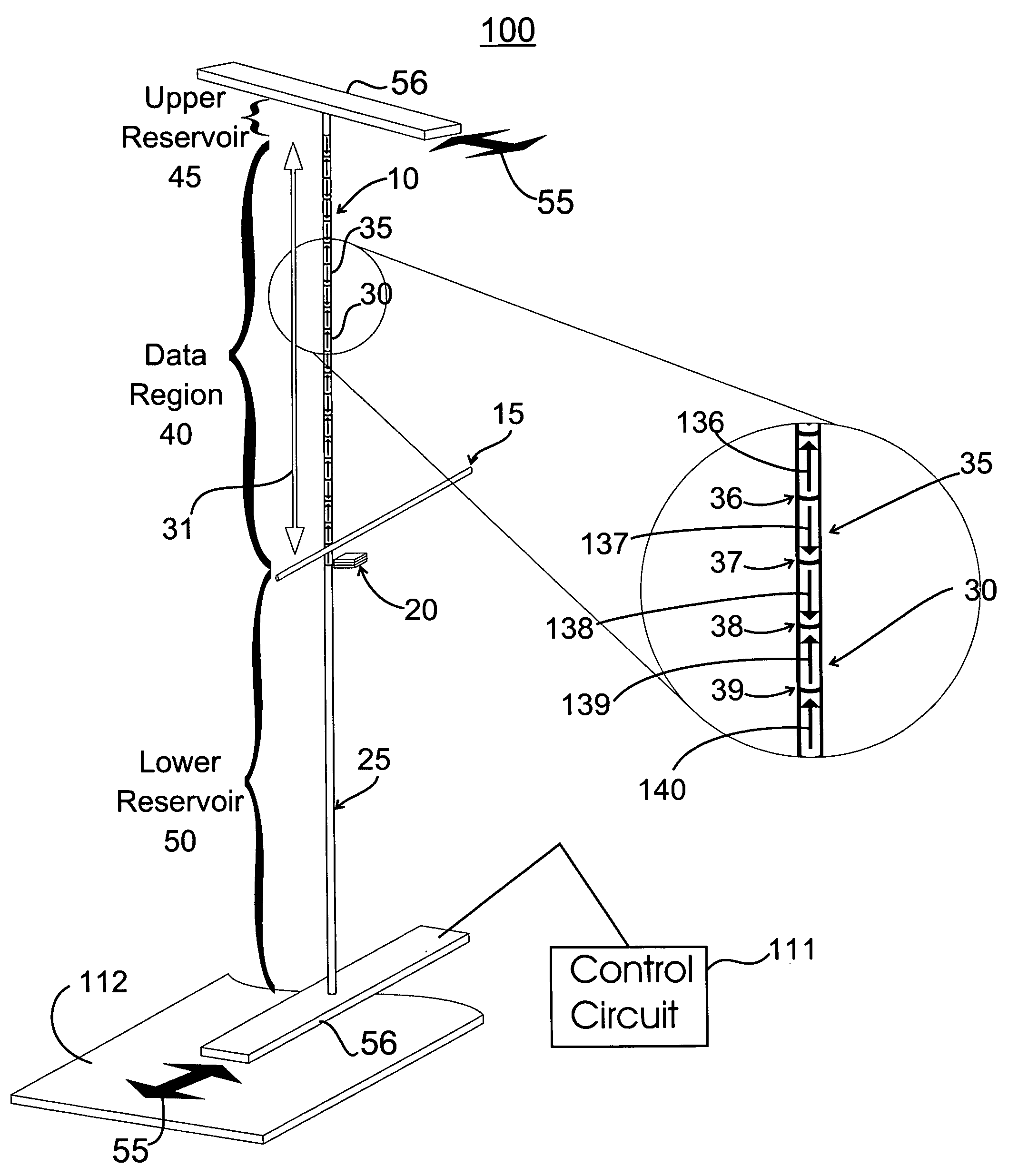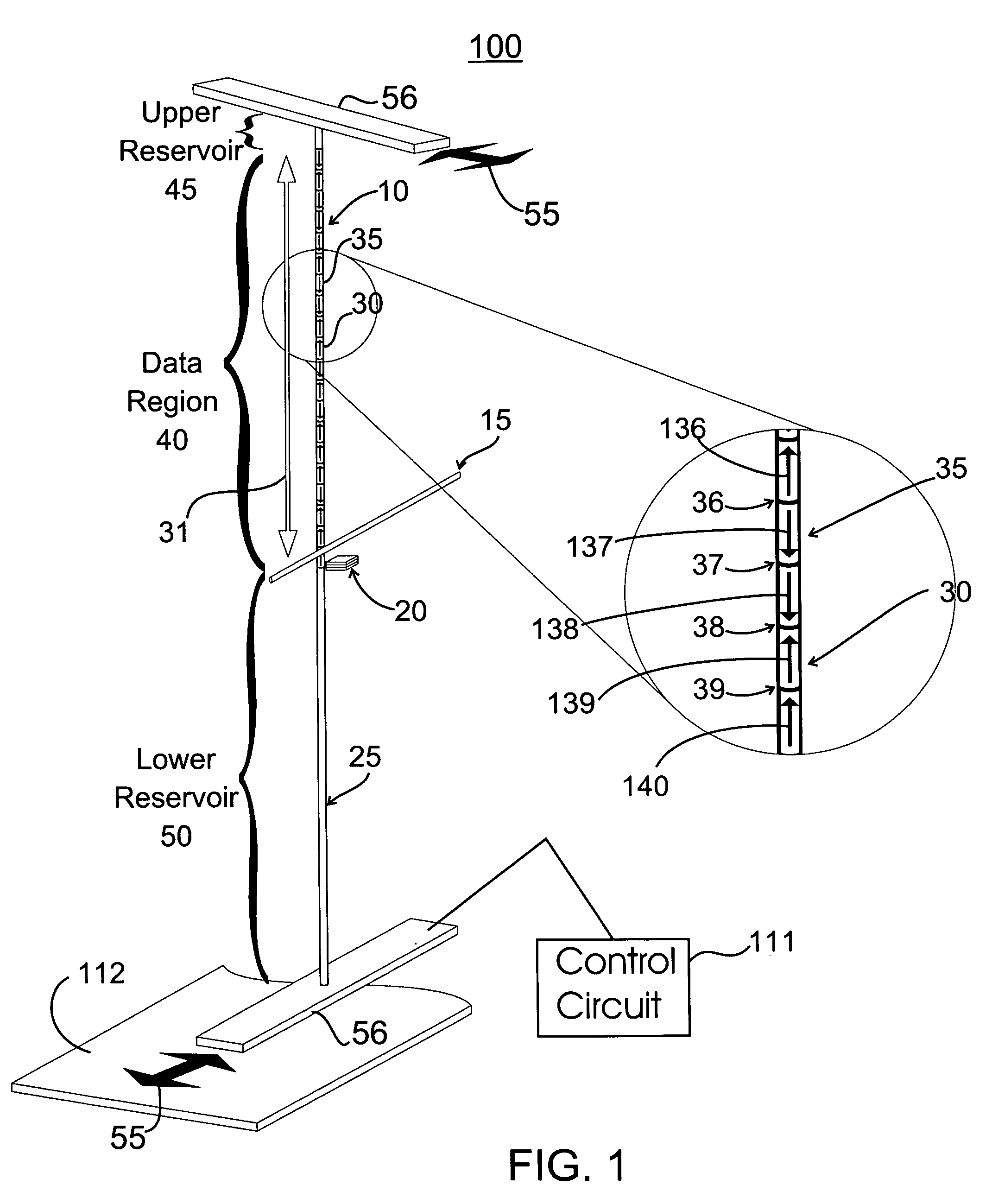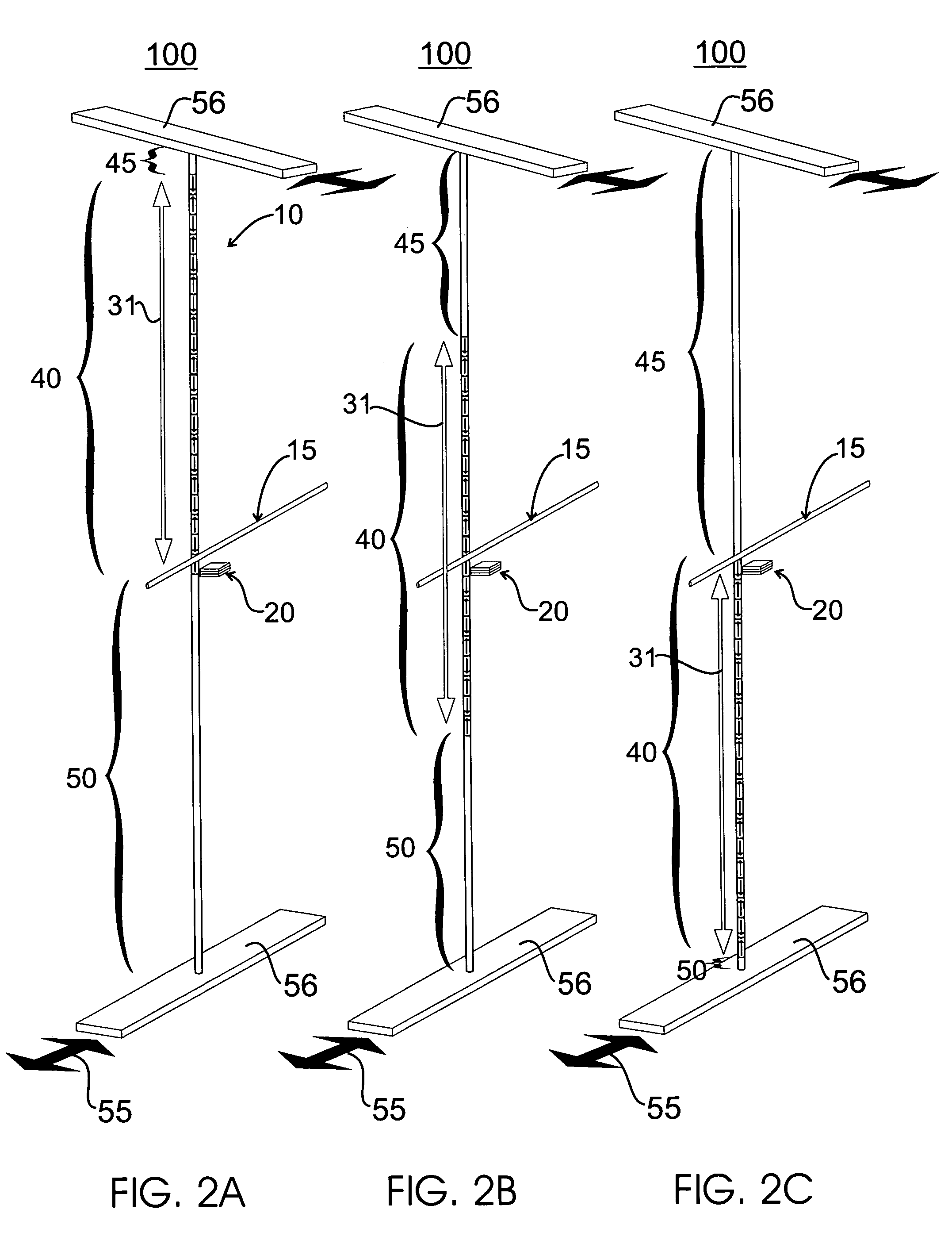System and method for transferring data to and from a magnetic shift register with a shiftable data column
a magnetic shift register and data column technology, applied in the field of memory storage systems, can solve the problems of solid-state random access memories, inability to reliably transfer data, and devices with moving parts that tend to wear out and fail, and achieve the effects of reducing the magnitude of the fringing field, reducing the fringing field, and increasing the sensitivity to the fringing field
- Summary
- Abstract
- Description
- Claims
- Application Information
AI Technical Summary
Benefits of technology
Problems solved by technology
Method used
Image
Examples
Embodiment Construction
[0041]The following definitions and explanations provide background information pertaining to the technical field of the present invention, and are intended to facilitate the understanding of the present invention without limiting its scope:
[0042]Homogeneous magnetic material means a contiguous volume of magnetic material, which may have a complex shape, which nominally has the same or similar magnetic properties, such as magnetization, magnetic anisotropy, magnetic exchange and magnetic damping, independent of the position within the volume. At the surfaces surrounding such material, these properties may differ from the properties within the interior of the volume because of differences in strain or stress, compositional gradients, reaction with the surrounding material, etc.
[0043]Inhomogeneous magnetic material means a contiguous volume of magnetic material, which may have a complex shape, whose magnetic properties, such as magnetization, magnetic anisotropy, magnetic exchange and...
PUM
 Login to View More
Login to View More Abstract
Description
Claims
Application Information
 Login to View More
Login to View More - R&D
- Intellectual Property
- Life Sciences
- Materials
- Tech Scout
- Unparalleled Data Quality
- Higher Quality Content
- 60% Fewer Hallucinations
Browse by: Latest US Patents, China's latest patents, Technical Efficacy Thesaurus, Application Domain, Technology Topic, Popular Technical Reports.
© 2025 PatSnap. All rights reserved.Legal|Privacy policy|Modern Slavery Act Transparency Statement|Sitemap|About US| Contact US: help@patsnap.com



